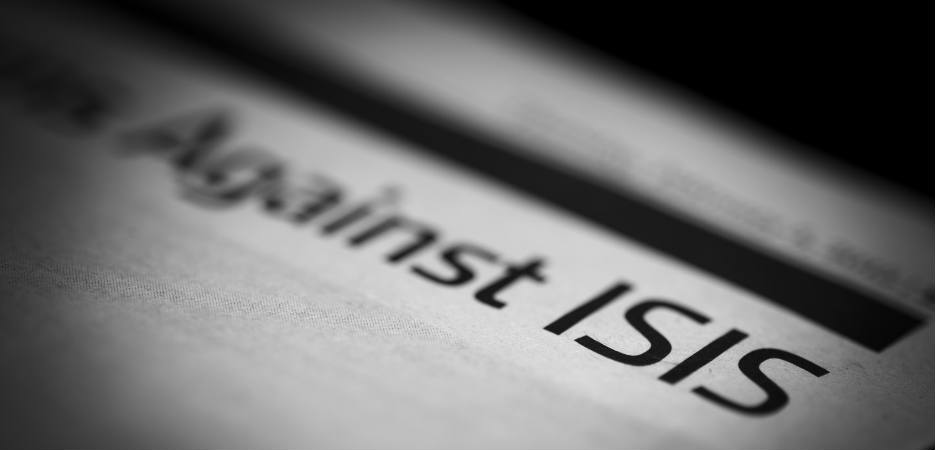The so-called Islamic State has become a label that actors and individuals can fall back on for personal and strategic reasons.
While some were announcing the imminent death of the self-proclaimed caliphate in Syria and Iraq, the Islamic State’s (IS) terrorism agenda was not only stepped up, it also spread into a number of countries. During the month of Ramadan (June 6th—July 6th 2016), IS directed or inspired terrorist attacks in 17 countries: Afghanistan, Bangladesh, Egypt, France, Iraq, Jordan, Libya, Niger, Nigeria, Pakistan, the Philippines, Somalia, Syria, Turkey, the United States and Yemen.
Various analysts saw a direct relationship between the Islamic State losing territory it controlled in Iraq and Syria due to international coalition attacks and the upsurge in acts of terrorism claimed by the group. According to this view, IS is beginning a transition: abandoning its project of territorial expansion and consolidation to become a mere terrorist organization. To illustrate this, it is possible IS will go back into hiding, as the organization’s spokesperson, Abu Mohammed al-Adnani, announced in May 2016. In other words, the proximity of the clinical death of the proto-state may result in its leaders turning IS into an organization similar to al-Qaeda before it controlled territory: a global terrorist network.
A Terrorist Label
Although this scenario seems more desirable than the current situation, this approach ignores a fundamental characteristic of IS: As well as being a territorial organization established in Syria, Iraq, Libya and other territories, the Islamic State is also a movement. Alongside its project of territorial consolidation, IS has been developing a program of terrorism outside the Levant since 2014, as much to destabilize any state actor involved in the coalition as to establish itself as the ideological reference point for non-state groups and individuals.
In contrast to al-Qaeda over the years, IS refers not just to the hierarchical organization ruling the proto-state while at the same time organizing attacks all over the globe, it is also a label that various actors can resort to under particular conditions. These actors may be non-state groups or individuals who are required to pledge allegiance and share IS ideology and goals (basically, the establishment of the caliphate).
At a later stage, the Islamic State confirms (or denies) this affiliation, as has been the case with certain groups—Boko Haram, Majilis Shura Shabab al-Islam in Libya, and Abu Ayyad in the Philippines, among others; and individuals: Amedy Coulibaly (Paris, January 2015), Seifeddine Rezgui (Sousse, July 2015) and Omar Mateen (Orlando, June 2016). In this last case, IS may “claim” the attack—if a relationship exists with a member of the organization —or “hail” it, if the only relationship between the attacker and IS comes down to pledging allegiance or responding to its calls for attacks.
Thus, the Islamic State has dimensions that are territorial (Syria and Iraq), decentralized (IS branches), and de-territorialized. This last aspect allows the losses inflicted on the proto-state to be disconnected from the potency of the ideology or, at least, the idea of IS.
The movement serves both the IS organization and its supporters. On the one hand, it allows the organization to spread its ideas across any territory, to gather new recruits for jihad, and to create the feeling that it is able to hit any actor/individual opposed to its caliphate project. Reciprocally, it allows non-state groups to gain legitimacy and increase their power of attraction by swearing allegiance to the designated global public enemy number one. In terms of the perpetrators of terrorist attacks or acts of violence, the “IS” label gives them a global dimension and can make a hero (martyr) of any individual who carries out an attack by turning an act of extreme violence—generally rooted in personal life stories and motivations—into an honorable gesture in the service of the noble cause of the Islamic State.
Public Enemy Number One
What implications does this dual approach—organization and movement—have for the analysis of past and future attacks? The case of the fatal lorry attack in Nice on July 14, 2016, provides an extreme example of the danger for both politics and the media for ignoring the unpredictable side of IS. The next day, in spite of the unprecedented nature of the attack and the scarcity of information, President François Hollande made the link with Islamic terrorism and proposed intensifying the bombings of Syria and Iraq by way of retaliation. Though the investigation had yet to reveal the reasons for the attack, both the political and media discourses had already connected Mohamed Lahouaiej-Bouhlel with the Islamic State organization based first on his origins and then on the attack’s modus operandi and timing.
Aside from criticism of political and media handling of the issue, the almost systematic link between various types of terrorist attacks and IS illustrates the lack of distinction between the organization and the label. As has been shown in various cases (Saint-Quentin-Fallavier in June 2015 and Orlando in June 2016)—and possibly in the case of Nice—individuals unrelated to IS use it as a label to gain maximum media impact.
Studies of these specific cases of terrorism, just like the investigations into foreign fighters, tend to reveal the extreme diversity of factors that push individuals to commit terrorist acts. The factors go beyond mere religious radicalization and may be psychological (mental health problems), familial, linked to personal history (experience of police abuse), or a feeling of injustice, among others. Above all, what stands out in the vast majority of cases is that the causes are personal.
Going beyond the symbols to which IS makes reference (Islam, violence, etc.), this focus would allow the real motives behind a particular terrorist attack to be analyzed along with its connection (or not) to the agenda of the Islamic State.
The political and media reflex consists of minimizing the real reasons, factors, and motives behind these attacks under the pretext that their perpetrators declared themselves to be members of IS or that IS claimed/hailed their acts. Paradoxically, this tendency to put various acts of terrorism into the same category ends up serving the objectives of IS for at least two reasons. First, it gives the feeling that IS is omnipresent, even outside its fields of military operation, and that it constitutes a permanent threat to any society. And, second, it leads the media and political leaders to place individual acts with diverse motivations within the context of the more global framework of the supposed war on the Islamic State. This vision ends up providing evidence—albeit in an inverse manner—that supports the IS discourse according to which the West has declared war on Islam.
In the same way, linking any individual act to the IS organization prevents us from moving beyond the ideological convergence in which violent extremism is exclusively linked to Islamic terrorism. This convergence means the debate on violent extremism takes place in direct relation to IS, as if the physical destruction of the caliphate could put an end to the attacks. It insists on the primacy of the individuals’ origins or religion and proposes only short-term security measures to fight the phenomenon.
In other words, the public debate is an exact fit with IS objectives in the West: perpetrating attacks to create confusion between terrorism and Islam, exacerbating tensions between Muslims and non-Muslims (“incompatibility between Islam and democracy” and a “failure of integration”) to encourage governments to take measures that stigmatize Muslims and, ultimately, manage to make individuals of Muslim faith and culture radicalized in this setting.
Countering the Message
To explore solutions to the transnational phenomenon of violent extremism reflection on our approach to the Islamic State is necessary. Understanding that IS is also a label that actors and individuals can fall back on for personal and strategic reasons radically changes the ways we deal with the attacks and those responsible for them, and helps us think about means of prevention.
Going beyond the symbols to which IS makes reference (Islam, violence, etc.), this focus would allow the real motives behind a particular terrorist attack to be analyzed along with its connection (or not) to the agenda of the Islamic State. The profile of the attacker could be explored in depth and long-term solutions could be conceived that act on the push and pull factors that lead individuals to turn to violent extremism.
From this perspective, it will be shown that the reasons diverse individuals join IS (physically or virtually) or commit attacks in its name are not exclusively ideological or religious. In many cases, they are connected to personal life histories and specific contexts. This shift from focusing on ideology and its promoters towards the study of the individuals who turn to the ideology is essential if we are to prevent violent extremism in the future.
*[This article was originally published by Barcelona Centre for International Affairs.]
The views expressed in this article are the author’s own and do not necessarily reflect Fair Observer’s editorial policy.
Photo Credit: arda savaşcıoğulları
 We bring you perspectives from around the world. Help us to inform and educate. Your donation is tax-deductible. Join over 400 people to become a donor or you could choose to be a sponsor.
We bring you perspectives from around the world. Help us to inform and educate. Your donation is tax-deductible. Join over 400 people to become a donor or you could choose to be a sponsor.
Support Fair Observer
We rely on your support for our independence, diversity and quality.
For more than 10 years, Fair Observer has been free, fair and independent. No billionaire owns us, no advertisers control us. We are a reader-supported nonprofit. Unlike many other publications, we keep our content free for readers regardless of where they live or whether they can afford to pay. We have no paywalls and no ads.
In the post-truth era of fake news, echo chambers and filter bubbles, we publish a plurality of perspectives from around the world. Anyone can publish with us, but everyone goes through a rigorous editorial process. So, you get fact-checked, well-reasoned content instead of noise.
We publish 2,500+ voices from 90+ countries. We also conduct education and training programs
on subjects ranging from digital media and journalism to writing and critical thinking. This
doesn’t come cheap. Servers, editors, trainers and web developers cost
money.
Please consider supporting us on a regular basis as a recurring donor or a
sustaining member.
Will you support FO’s journalism?
We rely on your support for our independence, diversity and quality.






